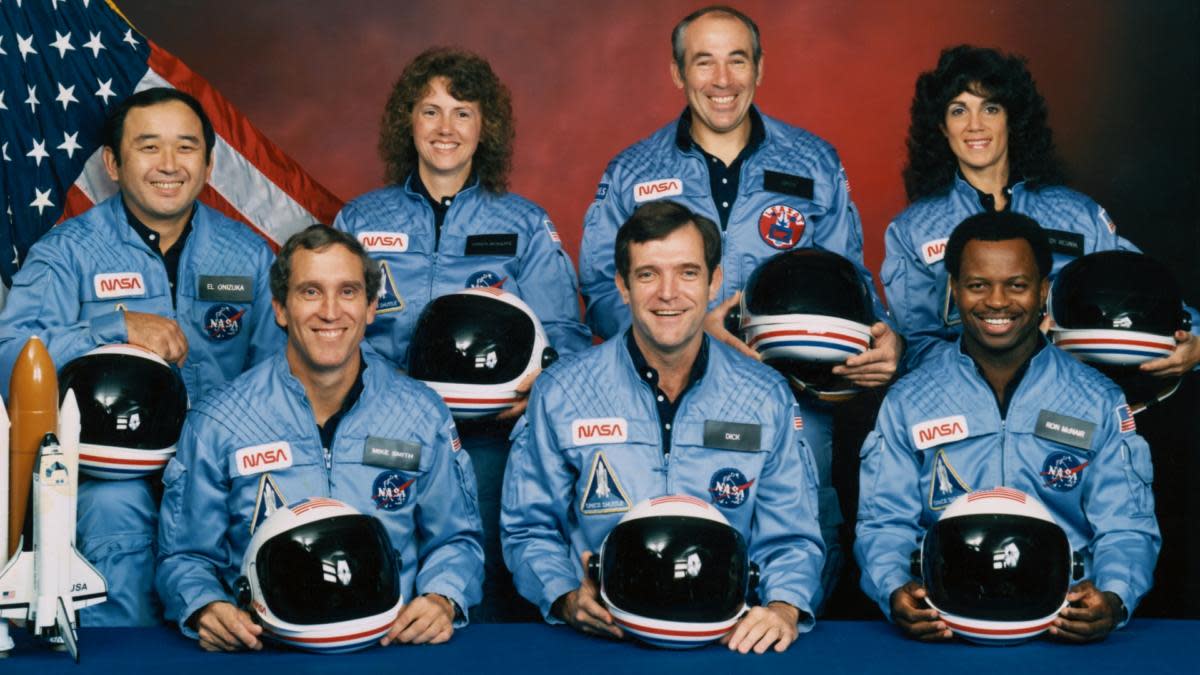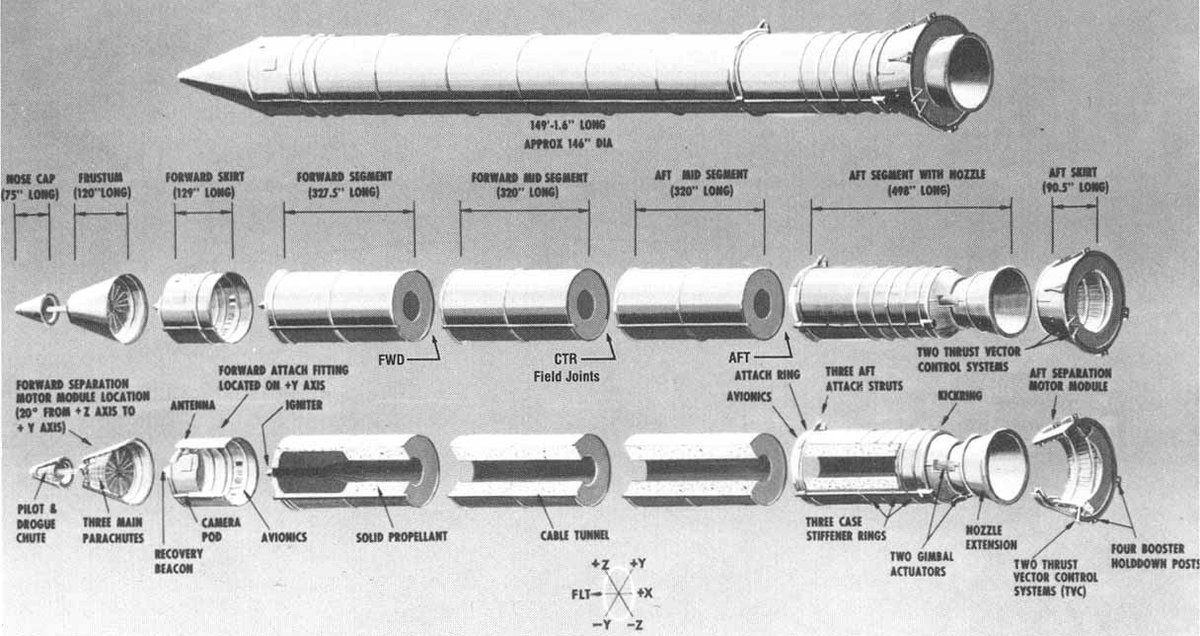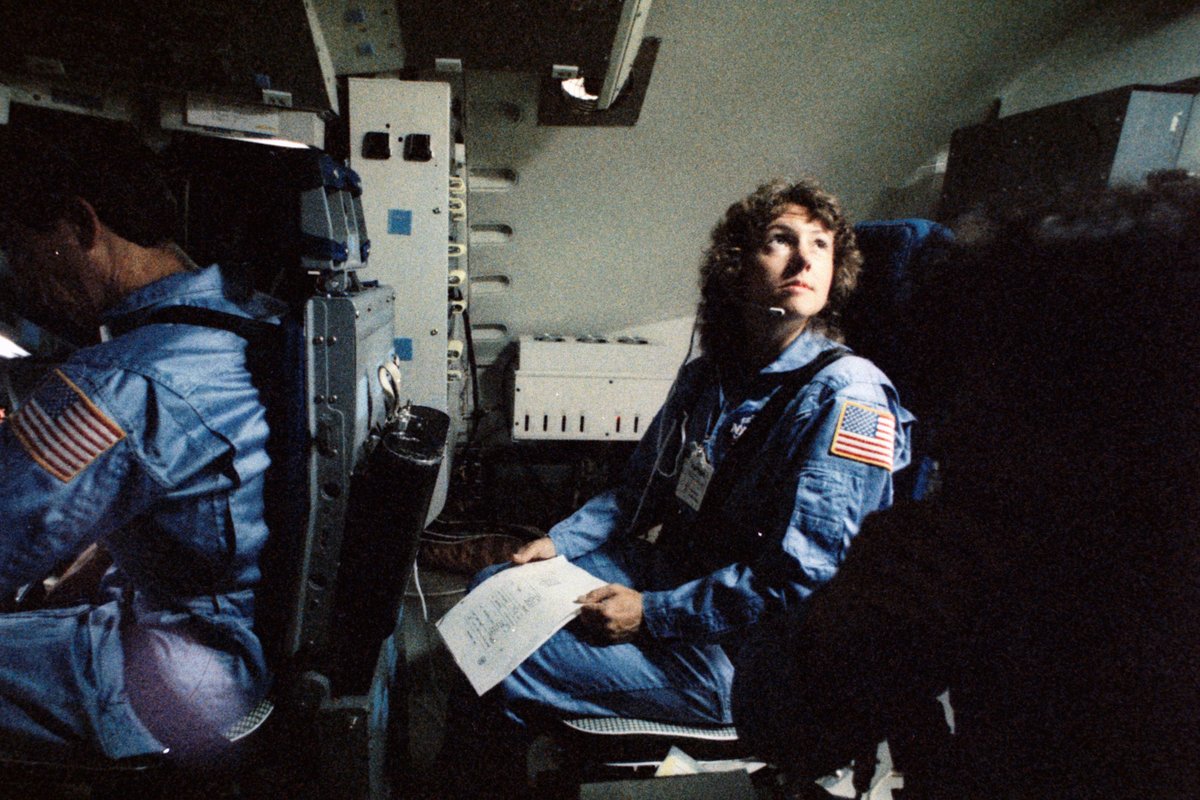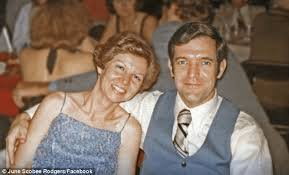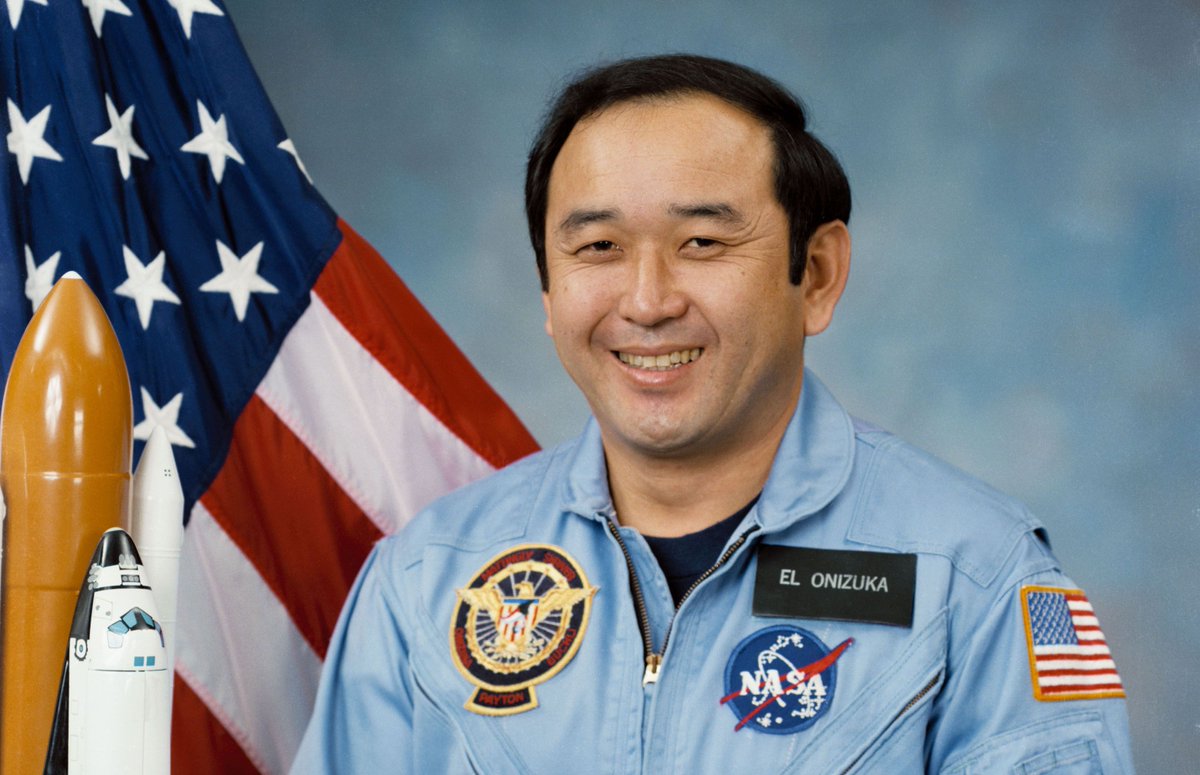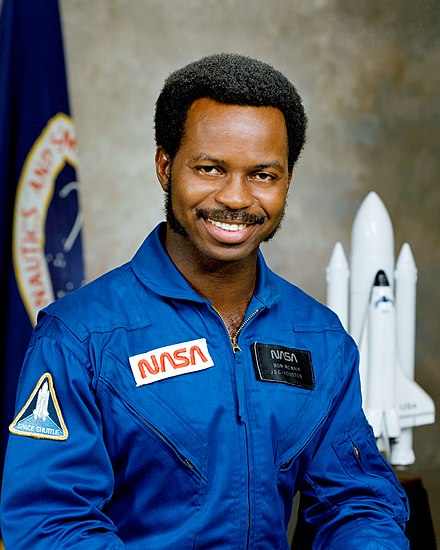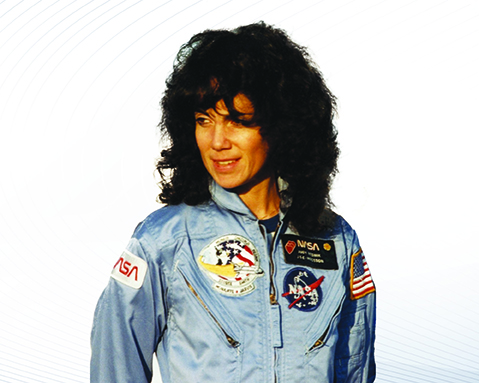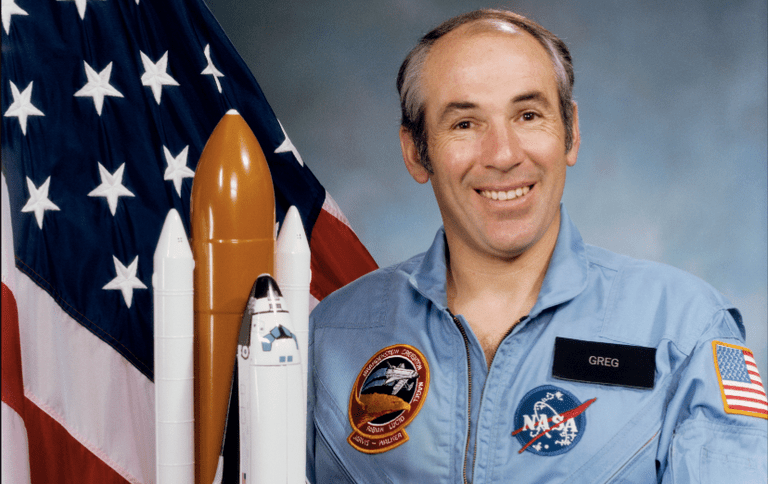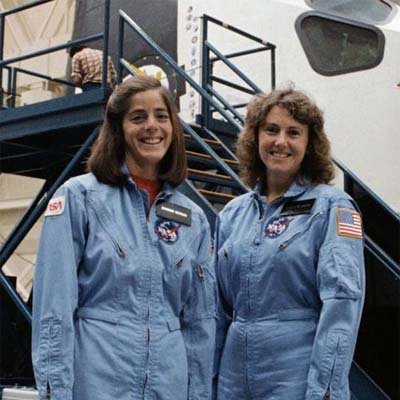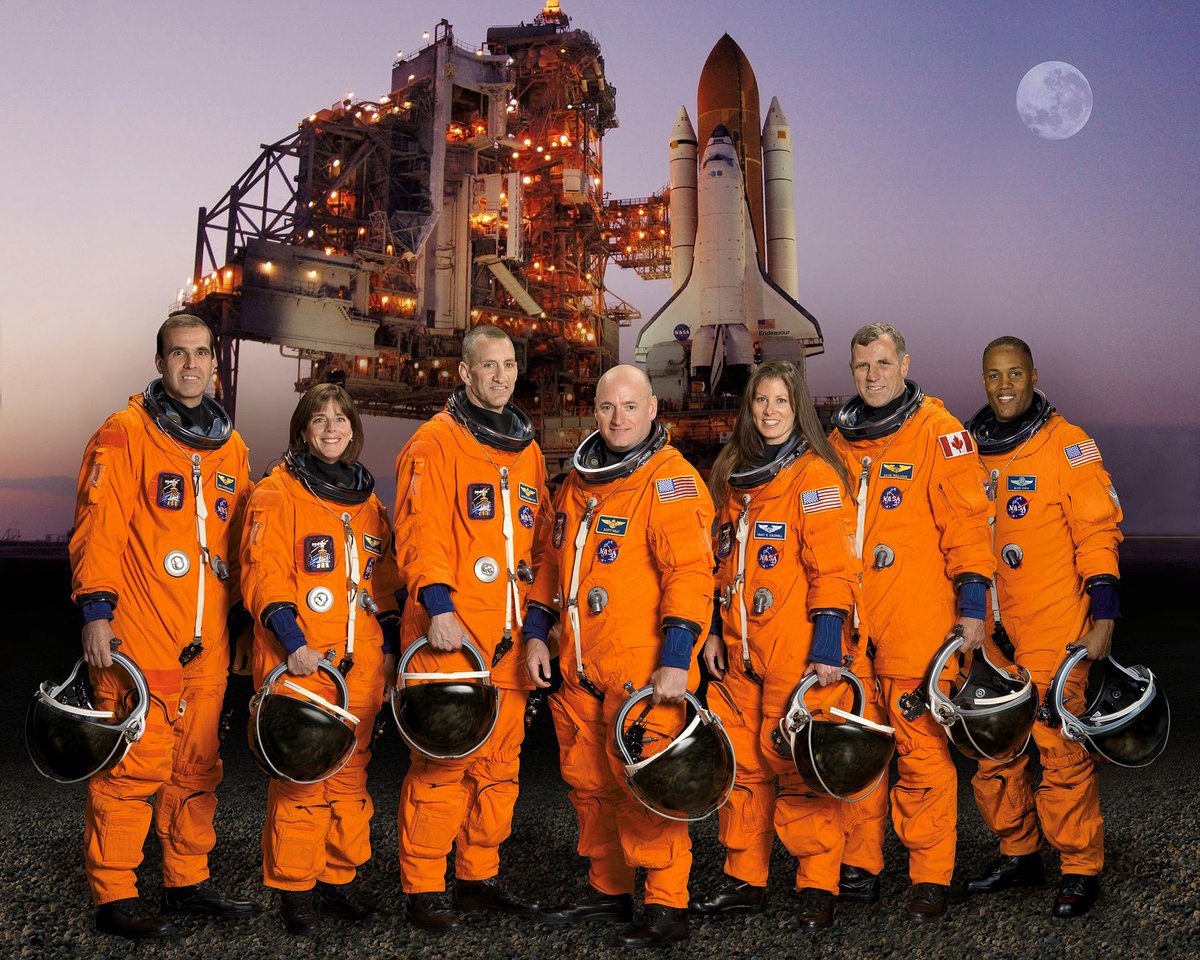For the 35th anniversary of the space shuttle Challenger's last mission, I'm going to share 35 Challenger facts you might not know.
#1: You probably didn't watch it live.
None of the major networks carried the launch, so only those with special access saw a live broadcast.
#1: You probably didn't watch it live.
None of the major networks carried the launch, so only those with special access saw a live broadcast.
Among those who had access to the live feed were thousands of schoolchildren across the country. NASA had arranged for public schools to watch the launch live because of the inclusion of Teacher in Space Christa McAuliffe.
A lot of people who were adults at the time tell me that they remember watching it live. I don't correct them because it's rude to tell someone their memories are false, but I think the emotional experience of seeing the footage, at whatever point in that day, made it FEEL live.
A lot of people also tell me they were home sick that day, I think because in order to have seen a launch at 11:38am on a Tuesday on their home TVs, they would have had to be home sick.
#2: Engineers who specialized in the solid rocket booster joints knew there was a danger the O-rings could fail in the cold and tried to warn NASA managers not to launch. But their concerns never made it very far up the chain of command, and the astronauts never new of them.
There was actually a late-night teleconference on the eve of the launch, with engineers arguing that it wasn't safe to launch in such cold weather. The temperature had dipped down to 8F during the night.
#3: The Teacher in Space program that chose Christa McAuliffe to fly on the shuttle had been announced by Ronald Reagan in 1984 as part of his reelection run. Reagan's education record had been...not great, but this splashy program seemed to end the discussion.
#4 Christa McAuliffe seems like she was a really great person. The stories from her family, friends, students, and co-workers all give a sense of a person who was filled with a contagious enthusiasm for life.
One detail that stays with me is her students' descriptions of her flying into the classroom ten minutes late with wet hair and ungraded papers spilling out of her bag, then giving a riveting lecture that changed their thinking about the world forever.
I love teachers who are impassioned messes rather than i-dotters and t-crossers. I also love that she once led a union drive to organize her fellow teachers.
#5: Dick Scobee was a really special person. When I met with his wife June and his daughter Kathie, they gave me a sense of how much he loved flying machines and how grateful he was that he got to do what he loved. He also adored his family and would have loved his grandkids.
#6: Mike Smith was a really special person. He had served as a Navy aviator in Vietnam and was looking forward to commanding a space shuttle mission later in 1986.
#7: Ellison Onizuka was a really special person. It cannot have always been easy to be the first Asian-American astronaut, and brought an easygoing grace and good humor to everything he did.
The recent Netflix documentary included a great anecdote I had never heard: when the TFNGs came to Houston, Dick Covey and his wife threw a party for the whole gang. Some old-school NASA personage came across Onizuka shucking oysters and asked him, Do you work for Mrs. Covey?
Onizuka said, Yes, I'm Mrs. Covey's houseboy.
We can only imagine the look on that person's face when they realized their mistake.
We can only imagine the look on that person's face when they realized their mistake.
#8: Ronald McNair was a really special person. As a child, he had the police called on him for trying to use a whites-only library. As an adult, he earned a PhD from MIT and went to space.
Ron's brother Carl told me that when Ron learned NASA was going to hire a new class of astronauts in 1978, he told Carl, "I'm going to space." Carl said, "You're going to apply?" And Ron was like, No, I'm GOING TO SPACE."
#9: Judith Resnik was a relaly special person. She was an electrical engineer, a child of Jewish immigrants, and a stone cold fox.
As a young adult, she was torn between pursuing her PhD in engineering and pursuing a career as a concern pianist because she was that good at both.
#10: Greg Jarvis was a really special person. He wasn't an astronaut, but was joining the Challenger crew as a payload specialist representing Hughes Aircraft.
He always seemed super psyched to be included in the mission, and he worked to take the spotlight off himself and put it on others, especially Christa McAuliffe. He had been planning to assist her with some of the lessons she was to teach from space.
#11: The Teacher in Space program chose a backup, Barbara Morgan, to train along with Christa and be ready to take her place if necessary. She spent a year training for a mission she knew she'd likely never fly, becoming close with Christa and the rest of the crew.
Most people, after watching their friends die before their eyes, would have turned away from the whole enterprise. But Barbara instead decided to go through with the year-long tour of public schools that Christa had been scheduled to do after coming back from space.
Barbara told me she wanted kids to see that after something tragic happens, we can either give up or we can hang onto the spirit that drove us to take risks in the first place.
Then she doubled down and BECAME AN ASTRONAUT. This was a big leap for someone who had started on this journey as an elementary school teacher. But she wanted to follow through on Christa's dream of inspiring kids by teaching them from space.
She finally got to fly in space in 2007, 21 years after Challenger.
Also, is this the best shuttle crew photo ever taken? I'm pretty sure it is.
Also, is this the best shuttle crew photo ever taken? I'm pretty sure it is.
#12: If NASA had waited just one more day to launch, Challenger probably would have been fine. The weather warmed up significantly, and the O-rings likely would not have lost their resiliency.

 Read on Twitter
Read on Twitter